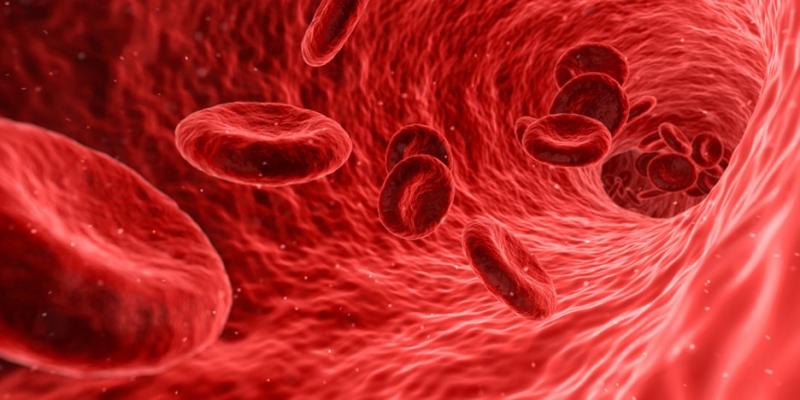5 Surprising Uses for Cord Blood

It may astonish you to find out there is significant value in an often-discarded byproduct of birthing—cord blood.
Cord blood comes from the vessels of the placenta and umbilical cord. Physicians collect the cord blood after the birth of a child and after they cut the umbilical cord.
The procedure is typically safe for both mother and child. Furthermore, cord blood has promising medicinal benefits.
To learn five surprising uses for cord blood, read on.
An Explanation of Cord Blood
Cord blood is full of stem cells. Most people know another kind of stem cell—embryonic cells—for their ability to develop into other cells. For instance, scientists can use embryonic cells to create brain, kidney and muscle cells—or any other cell imaginable.
Adults have stem cells also. However, they're not as versatile as embryonic cells.
Cord blood stem cells aren't exactly like embryonic or adult ones. However, they're closer to embryonic stem cells.
Sometimes, researchers call them cord-blood derived embryonic-like stem cells. Alternatively, some scientists call them CBE.
Surgeons can transplant CBE into another person's body. There, it can rebuild bone marrow or jumpstart the immune system.
Cord blood stem cells have restored health to many people. They've also cured people with genetic diseases.
Understanding Cord Blood Banking
Cord blood banking is the gathering and storage of blood from the umbilical cord. Medical professionals collect cord blood stem cells after the baby is born. It helps physicians combat conditions that require stem cell transplants.
A public cord blood bank accepts cord blood for research. Alternatively, the cord blood bank may provide stem cells for someone who needs them.
Families use private cord blood banks. There, they store cord blood for use by their family.
Private cord blood banks offer this service for a fee. It's a highly beneficial service for people with histories of genetic disease in their family.
Continue reading for five surprising uses of cord blood.
1. Medicinal Treatments
Physicians can use cord blood to cure almost 80 conditions. These conditions include:
- Cancer
- Blood disorders
- Bone marrow failure
- Metabolic diseases
- Immune illnesses
Patients contract most of the conditions suited for cord blood therapy through genetic inheritance.
Often, a physician can extract cord blood for a child with a genetic disease from either a sibling or an unrelated donor. However, cord blood from a family member is much more effective. Cord blood from a family member has proven twice as effective as that which comes from a non-relative.
2. Transplant Medicine
Cord blood contains many kinds of stem cells. However, the main type is hematopoietic stem cells (HSCs).
HSCs form blood. They're responsible for the development and maintenance of blood in the immune system.
Hematopoietic stem cells can turn into three kinds of blood cells—red, white or platelets. They help to rebuild a healthy blood immune system when used during a transplant.
Cord blood shares some of the beneficial properties of bone marrow. For instance, it's readily available and easily accessible at birth.
3. COVID-19 Treatment
Researchers also believe that cord blood may help treat the novel coronavirus. Scientists believe that it can aid in T-regulatory cell therapy. With this method, scientists would use stem cells from cord blood for the treatment.
Already, some COVID-19 patients had received cord blood-derived T-regulatory cell therapy. Physicians have been able to deliver the treatment through the FDA-approved emergency use regulations.
FDA rules allow physicians to give patients up to three doses of the treatment. After treatment, patients exhibit notable improvements within 48 hours of the first treatment.
To learn more about cord blood treatment for COVID-19, check out this post.
4. Anti-Inflammatory Treatment
Researchers have also discovered that cord blood may serve as an effective therapy for inflammation. A newly discovered factor has helped researchers counter symptoms of inflammation and sepsis. These symptoms include fever, respiratory fluctuation, and even death.
Inflammation can turn against the human body. It can even damage healthy human tissue.
In studies, without cord blood treatment, only 20-percent of laboratory mice survived more than two to four days. With the therapy, 60-percent of laboratory mice survived testing.
5. Stem Cell Research
Over the last decade, researchers have done a remarkable amount of research using cord blood. This research has helped them to discover several regenerative treatments.
Before relatively recent studies, physicians believed that it wasn't possible to treat some conditions using cord blood stem cells. Nevertheless, physicians have completed more than 40,000 transplants around the world using cord blood for bone marrow reconstitution.
Now, researchers have learned that cord blood stem cells can play a role in the treatment of many conditions. Over the last three decades, they've made many life-saving breakthroughs with cord blood research.
The Importance of Cord Blood
Until the 70s, physicians discarded placentas and umbilical cords routinely. During that time, however, researchers figured out that cord blood can provide the same kind of blood-forming stem cells as bone marrow.
Because of this discovery, physicians started collecting and storing umbilical cord blood. Now, doctors use cord blood to treat serious illnesses, such as cancers and immune system disorders that typically require radiation treatment. This method is especially beneficial for children whose treatment outcomes are exceptional when receiving stem cells close to their own.
Knowing About Uses for Cord Blood Could Help Your Child
In recent years, many children have benefited from cord blood treatments. These successes have led to a new era of regenerative medicine.
Most success in this area is with children with a genetic disease receiving a core blood donation from a sibling or nonfamily member. It's a great idea for parents to learn what they can about uses for cord blood.
There's a lot to keep up on in the world of health and fitness. Visit Mooode.com for the latest info about wellness, fitness, and health.
Previous Posts: